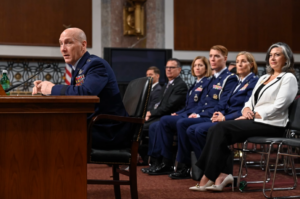
As the Air Force looks to retire some of its legacy intelligence, surveillance, and reconnaissance platforms, the nominee to be the service’s next chief of staff said Tuesday he wants to transition to a more “system-centric” approach for ISR assets. Gen. David Allvin, the Air Force’s current vice chief, told lawmakers he envisions the service’s ISR modernization effort leveraging “more persistent, accessible, survivable and connected” systems as well as making greater use of Space Force capabilities to fill potential gaps.…

 By
By 











